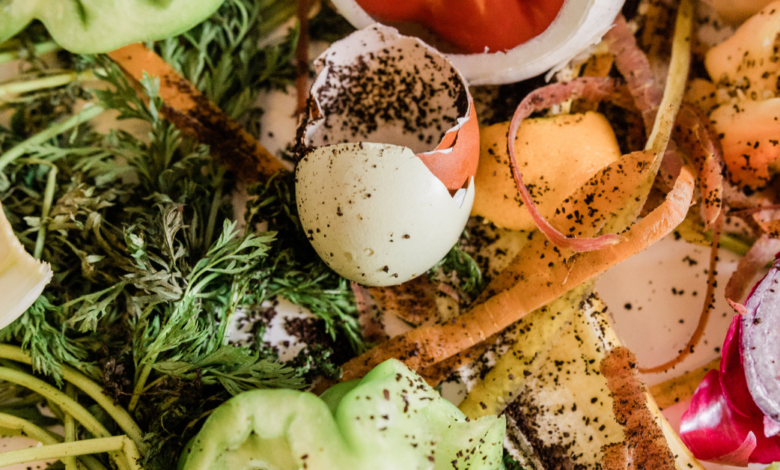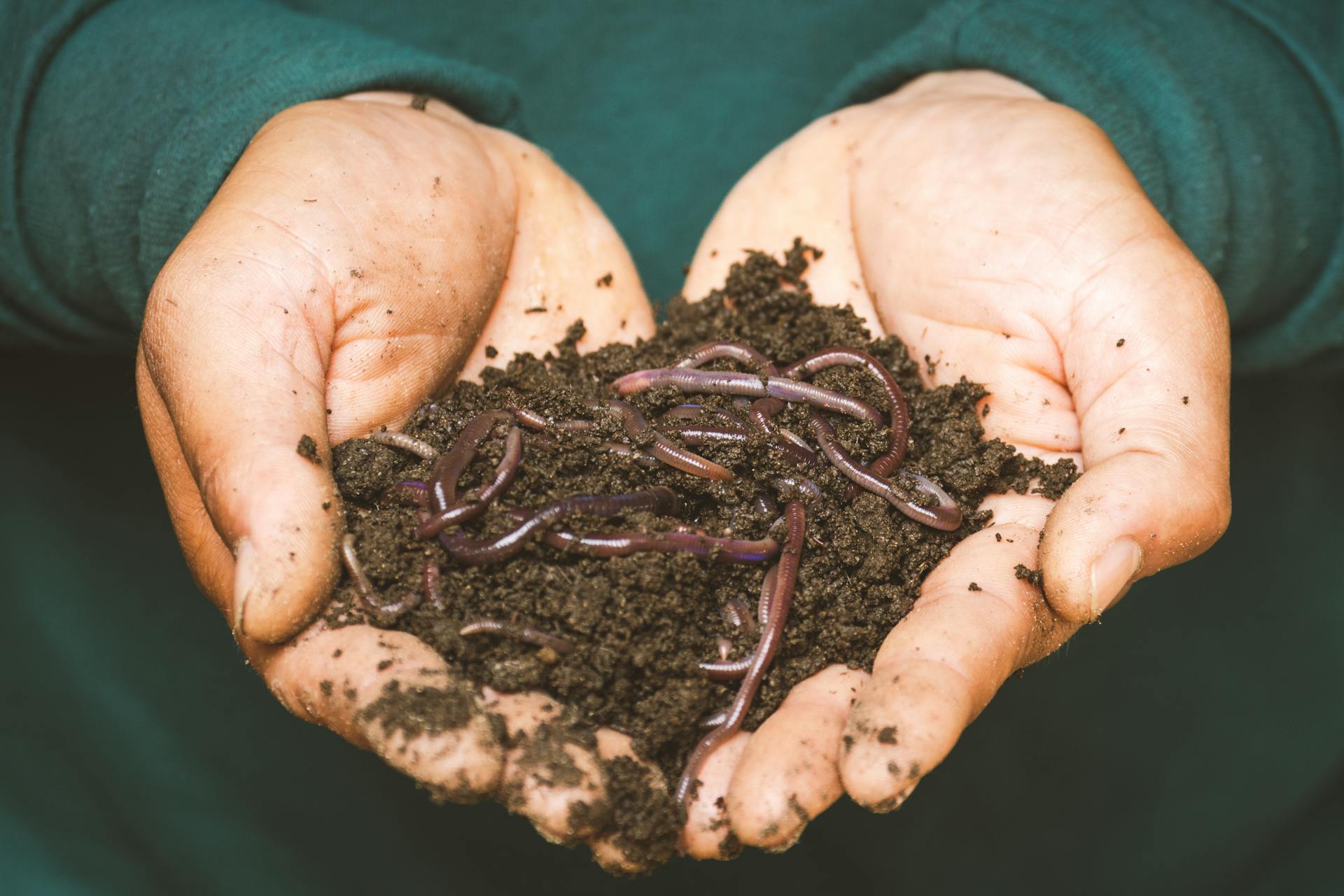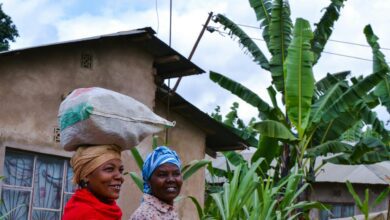A Beginner’s Guide to Composting: How to Start Composting for Beginners

Composting is an eco-friendly practice that helps reduce the amount of waste sent to landfills, while simultaneously providing a valuable resource for gardeners and farmers. It is a sustainable way to manage organic waste and promote a circular economy.
The benefits of composting
Composting offers numerous benefits for both the environment and gardeners. Here are some of the key advantages:
- Reduces waste: By composting organic materials, you can significantly reduce the amount of waste that ends up in landfills or incinerators, thereby minimizing greenhouse gas emissions and conserving valuable landfill space.
- Improves soil quality: Compost is rich in essential nutrients, such as nitrogen, phosphorus, and potassium, as well as beneficial microorganisms. Adding compost to your soil can improve its structure, water retention capacity, and fertility, leading to healthier and more productive plants.
- Conserves water: Compost helps soil retain moisture, reducing the need for frequent watering and minimizing water waste.
- Suppresses plant diseases and pests: The beneficial microorganisms present in compost can help suppress certain plant diseases and pests, reducing the need for chemical pesticides and promoting a more sustainable gardening approach.
- Cost-effective: Composting can save you money by reducing the need for expensive commercial fertilizers and soil amendments, while also diverting organic waste from landfills, which often incurs disposal fees.
Types of composting methods
There are several methods of composting, each with its own advantages and considerations. Here are some common types:
- Backyard composting: This is the most common method for home gardeners and involves creating a compost pile or using a bin or tumbler in your backyard.
- Vermicomposting: This method involves using specialized worms, such as red wigglers, to break down organic waste. The worms consume the waste and produce nutrient-rich castings (worm manure).
- Hot composting: This method involves creating a large, well-aerated pile that generates high temperatures (between 130°F and 160°F) through the decomposition process. Hot composting breaks down materials quickly but requires more active management.
- Cold composting: This is a slower process that relies on lower temperatures and less frequent turning of the pile. Cold composting is generally easier for beginners but takes longer to produce finished compost.
- Bokashi composting: This method uses a specialized bokashi bran mix to ferment organic waste in an airtight container. The fermented waste can then be buried in the ground or added to a traditional compost pile.
Also read: Is Palm Oil Really Bad for You?
Composting for beginners: Choosing the right composting system

For beginners, the most practical and straightforward composting method is often backyard composting using a bin or tumbler. These systems are easy to set up, maintain, and can accommodate a variety of organic materials.
When selecting a composting system, consider factors such as:
- Space availability: If you have limited outdoor space, a compact bin or tumbler may be more suitable than a large, open compost pile.
- Ease of use: Tumblers and bins with lids can be more convenient for turning and managing the compost, especially for those with physical limitations.
- Appearance: If aesthetics are a concern, enclosed bins or tumblers can provide a neater appearance compared to open piles.
- Cost: While some composting systems can be expensive, there are also many affordable options, including homemade bins or simple wire enclosures.
Setting up your composting area
Once you’ve chosen your composting system, it’s time to set up your composting area. Here are some tips:
- Location: Select a well-drained area that receives partial sun exposure. Avoid placing your compost pile too close to buildings or water sources to prevent potential odors or leaching.
- Base: Create a base for your compost pile or bin using materials like wood pallets, wire mesh, or landscape fabric. This will help improve drainage and prevent weeds from growing into the pile.
- Accessibility: Position your composting area in a convenient location that is easy to access for adding materials and turning the pile.
- Moisture: Ensure that your composting area has access to a water source, as maintaining the proper moisture level is crucial for successful composting.
- Insulation (optional): If you live in a colder climate, you may want to insulate your compost bin or pile to help maintain consistent temperatures and promote decomposition during the winter months.
What materials can be composted?
The key to successful composting is understanding what materials can and cannot be composted. Generally, any organic matter that was once living can be composted, including:
- Yard waste: Grass clippings, leaves, twigs, and plant trimmings.
- Fruit and vegetable scraps: Peels, cores, and other food waste from fruits and vegetables.
- Coffee grounds and tea bags: These provide valuable nitrogen and moisture to the compost pile.
- Shredded paper and cardboard: Avoid using glossy or coated paper products.
- Eggshells: Crushed eggshells add calcium to the compost.
- Sawdust and wood chips: These provide carbon and help aerate the pile.
Materials that should be avoided in a typical backyard compost pile include:
- Meat, fish, and dairy products: These can attract pests and produce unpleasant odors.
- Diseased plants: Composting these may spread plant diseases.
- Pet waste: Pet feces can contain harmful pathogens and should not be composted.
- Glossy or coated paper: These materials may contain harmful chemicals that can contaminate the compost.
Also read: Eco-Friendly Gardening: Learn How to Make a Compost Bin and Turn Your Waste into Nutrient-Rich Soil
The do’s and don’ts of composting for beginners
To ensure a successful and efficient composting process, follow these do’s and don’ts:
Do’s:
- Maintain a balanced mix of green (nitrogen-rich) and brown (carbon-rich) materials: This balance helps create the optimal conditions for decomposition.
- Shred or chop larger materials: This increases the surface area and speeds up the decomposition process.
- Ensure proper aeration: Regularly turning or aerating the compost pile introduces oxygen, which is essential for the microorganisms to thrive.
- Monitor moisture levels: The compost pile should be moist but not soaked. Add water if it becomes too dry.
- Insulate the pile (optional): In colder climates, insulating the pile can help maintain consistent temperatures and promote decomposition.
Don’ts:
- Don’t compost meat, dairy, or greasy foods: These can attract pests and create odor problems.
- Don’t add diseased plants or weeds with mature seeds: This can spread plant diseases or introduce unwanted weeds to your garden.
- Don’t let the pile become too dry or too wet: Maintaining the proper moisture balance is crucial for effective composting.
- Don’t compact the pile too much: Excessive compaction can limit air flow and slow down the decomposition process.
- Don’t add materials treated with pesticides or herbicides: These chemicals can contaminate the compost and potentially harm plants.
Managing and maintaining your compost pile

Proper management and maintenance are essential for successful composting. Here are some tips for keeping your compost pile in optimal condition:
- Turning the pile: Regularly turning or aerating the compost pile introduces oxygen and helps distribute moisture and microorganisms throughout the pile. Aim to turn the pile every two to four weeks, or as needed.
- Monitoring moisture levels: The ideal moisture level for a compost pile is similar to a well-wrung-out sponge. If the pile becomes too dry, add water; if it’s too wet, add dry, carbon-rich materials like shredded paper or straw.
- Maintaining the right balance: Aim for a balanced mix of green (nitrogen-rich) and brown (carbon-rich) materials. A general rule of thumb is to use one part green materials to two or three parts brown materials.
- Insulating the pile (optional): In colder climates, insulating the compost pile with a layer of straw, leaves, or a tarp can help maintain consistent temperatures and promote decomposition during the winter months.
- Controlling odors: If your compost pile develops an unpleasant odor, it may be too wet or lacking in air circulation. Try adding dry, carbon-rich materials like shredded paper or straw, and turn the pile more frequently.
- Monitoring temperature (optional): For hot composting methods, monitoring the temperature of the pile can help ensure that the microorganisms are actively decomposing the materials. Ideal temperatures range from 130°F to 160°F (54°C to 71°C).
Also read: Unleashing the Power of the Sun: How Does Solar Energy Work?
Troubleshooting common composting problems
Even with proper management, composting can sometimes encounter challenges. Here are some common problems and their solutions:
- Slow decomposition: If your compost pile is not breaking down as quickly as expected, it may be due to a lack of moisture, air circulation, or a imbalance in the green-to-brown material ratio. Try adding water, turning the pile more frequently, and adjusting the material mix.
- Foul odors: Unpleasant odors can indicate that the pile is too wet, lacks air circulation, or contains materials that should not be composted (such as meat or dairy products). Try adding dry, carbon-rich materials like shredded paper or straw, and turn the pile more frequently to introduce air.
- Pest problems: If you notice an influx of pests like rodents or flies, it may be because the pile contains materials that attract them (like meat or dairy products). Remove any inappropriate materials and ensure that the pile is well-aerated and maintained at the proper moisture level.
- Incomplete decomposition: If your compost pile is not fully breaking down, it may be due to a lack of diversity in the materials or insufficient moisture and air circulation. Try adding a variety of materials, maintaining proper moisture levels, and turning the pile more frequently.
- Excessive moisture: If your compost pile becomes saturated and soggy, it may be due to excessive rainfall or overwatering. Try adding dry, carbon-rich materials like shredded paper or straw to absorb excess moisture, and ensure proper drainage in your composting area.
Harvesting and using your compost
Once your compost pile has fully decomposed and cooled down, it’s time to harvest and use your nutrient-rich compost. Here’s how:
- Identifying finished compost: Finished compost should have a dark, crumbly texture and an earthy aroma. It should no longer resemble the original materials you added to the pile.
- Harvesting the compost: Use a pitchfork or shovel to carefully remove the finished compost from the bottom or sides of the pile, leaving the unfinished materials in the center to continue decomposing.
- Screening the compost (optional): For a finer texture, you can screen or sift the compost using a mesh screen or wire mesh. This will remove any larger, undecomposed materials.
- Using the compost: Incorporate the finished compost into your garden soil, potting mixes, or lawn by mixing it into the top few inches of soil. Compost can also be used as a top dressing or mulch around plants.
- Storing excess compost: If you have excess compost, you can store it in a dry, well-ventilated area for later use. Consider covering it with a tarp or storing it in a sealed container to maintain its moisture and nutrient levels.
Composting for beginners tips
To ensure a successful and rewarding composting experience, here are some additional tips for beginners:
- Start small: If you’re new to composting, begin with a small bin or pile to get the hang of the process before scaling up.
- Keep it simple: Don’t overcomplicate the process. Focus on maintaining a balanced mix of green and brown materials, proper moisture levels, and regular turning.
- Be patient: Composting is a gradual process, and it may take several months to produce finished compost, depending on the materials used and the composting method.
- Experiment: Try different composting methods or materials to find what works best for your situation and preferences.
- Learn from experience: Observe your compost pile and make adjustments as needed. Over time, you’ll develop a better understanding of what works and what doesn’t.
- Involve the family: Composting can be a fun and educational activity for the whole family. Encourage children to participate in the process and learn about the importance of reducing waste and nurturing the environment.
- Join a community: Connect with local gardening clubs, community gardens, or online forums to learn from experienced composters and share your own experiences.
Conclusion
Composting is a rewarding and eco-friendly practice that transforms organic waste into a valuable resource for your garden or landscape. By following the guidelines outlined in this beginner’s guide, you can successfully establish and maintain a composting system that suits your needs and preferences.
Remember, composting is a journey, and with patience, experimentation, and a willingness to learn, you’ll soon become an expert in creating nutrient-rich compost for your plants. Not only will composting reduce your environmental impact, but it will also provide you with a sense of satisfaction in contributing to a more sustainable future.
Start your composting journey today! Don’t wait – begin reducing your waste and enriching your soil with the power of composting.




